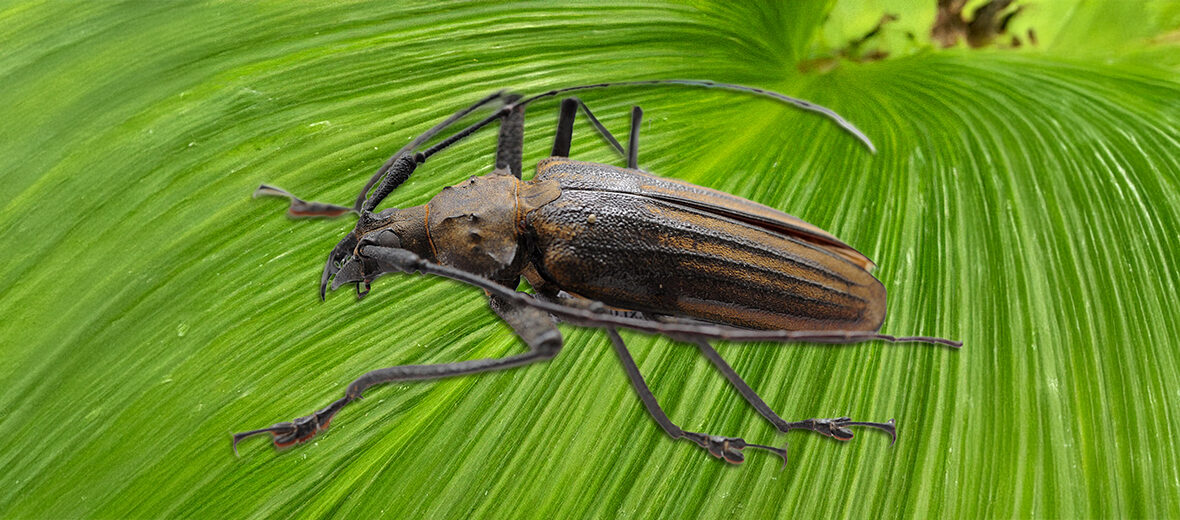
The giant Fijian long-horned beetle hails from the island of Viti Levu in Fiji, and is among the largest known living insect species. These beetles face the threats of habitat loss and destruction at the hands of residential and commercial developments, farming, and deforestation due to logging; hunting, for food; trapping; pollution, both land and water; and climate change, that can cause severe storms and flooding. The IUCN lists these large beetles as Endangered. Their population trend is listed as decreasing.
First the Stats…
Scientific name: Xixuthrus heros
Weight: Up to .38 ounce
Length: Up to 5.9 inches
Lifespan: Up to 10+ years
Now on to the Facts!
1.) These beetles have very strong jaws and should be handled with care to avoid being bitten.
2.) When threatened, these giants are able to produce a loud and formidable hissing sound by squeezing air out from under their elytra (the wing cases).
3.) Besides all the other threats they face, these beetles also have to content with the Indian mongoose.
4.) They prefer to dwell in the lowland rainforests of south-east Viti Levu, with Colo-i-Suva Forest Reserve being their most commonly found location.
5.) Humans often eat their larvae. They locate the beetles by splitting decaying wood, collect the larvae and then the feast is on. Afterwards, the split wood is burned for fuel and heat, which further degrades their habitat.
But wait, there’s more on the giant Fijian long-horned beetle!
6.) These critters are nocturnal (active at night).
7.) Large trees that are crucial for the species’ survival, are at risk due to excessive logging and the conversion of native forests into agricultural lands. Lowland forest habitats are quickly disappearing, and these large trees, critical for larval development, are increasingly more scarce in Fijian forests.
Did you know…?
These beetles are often collected for international trade, a practice that even further exacerbates their rarity. Any loss of larval or adult individuals before they can reproduce poses a substantial threat to their already endangered population.
8.) The ever-growing frequency and power of cyclones bring about a significant threat to the entire range of these beetles. Cyclones can cause extensive damage to the remaining habitat, potentially jeopardizing the survival of this species.
9.) The number of eggs laid as well as the length of time they remain in the larval form are unknown at this time.
10.) Fijians often times kill adult beetles due to their ominous size and loud hissing, primarily when attracted to lights on or near buildings.
Now a Short Giant Fijian Long-Horned Beetle Video!
Be sure to share & comment below! Also, check out the Critter Science YouTube channel. Videos added regularly!

Want to suggest a critter for me to write about? Let me know here.
Some source material acquired from: Wikipedia & IUCN
Photo credit: Michael Munich



